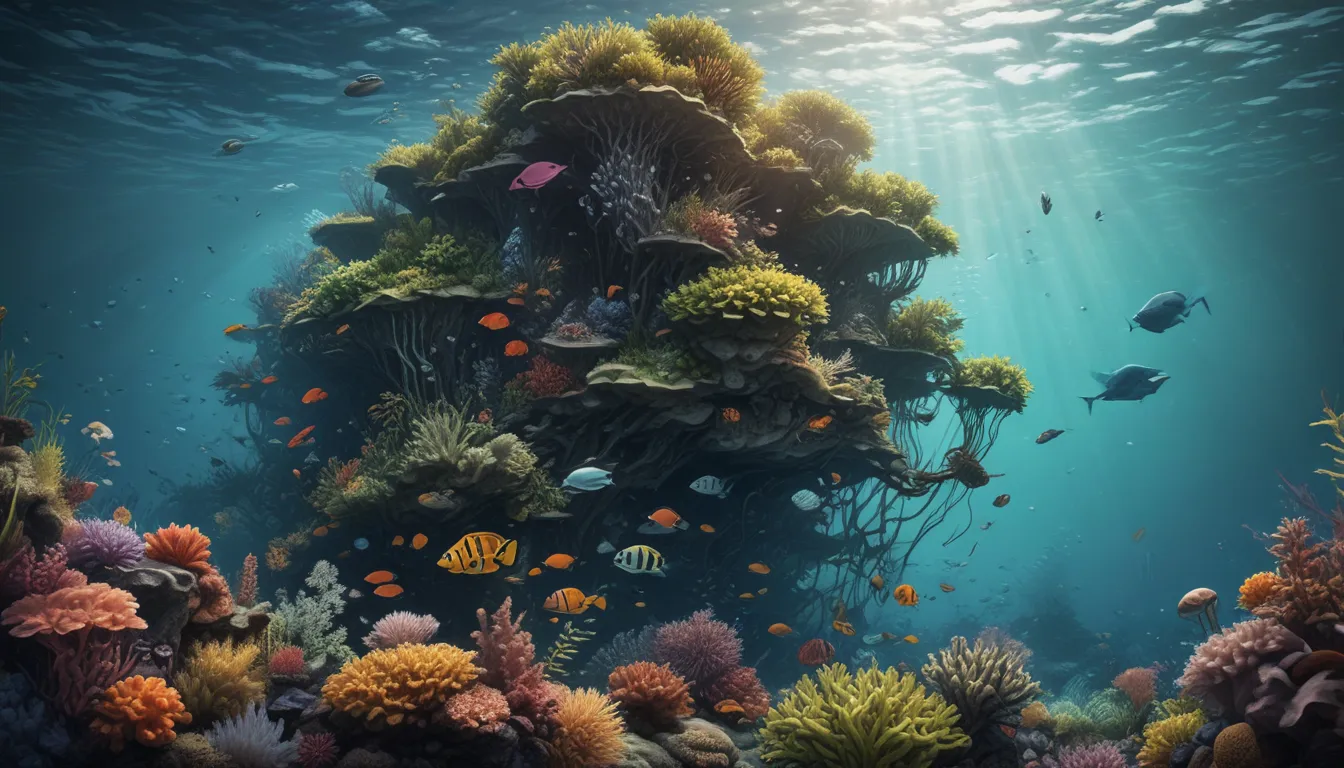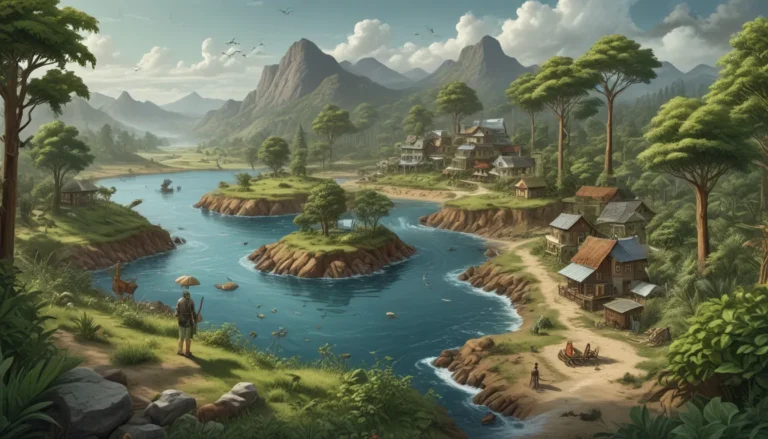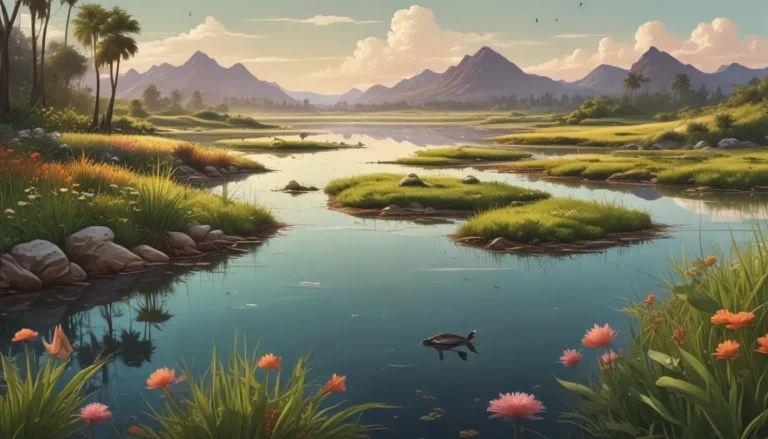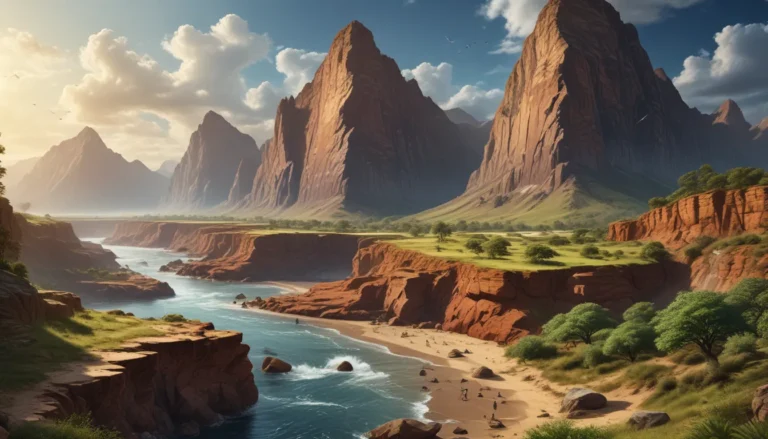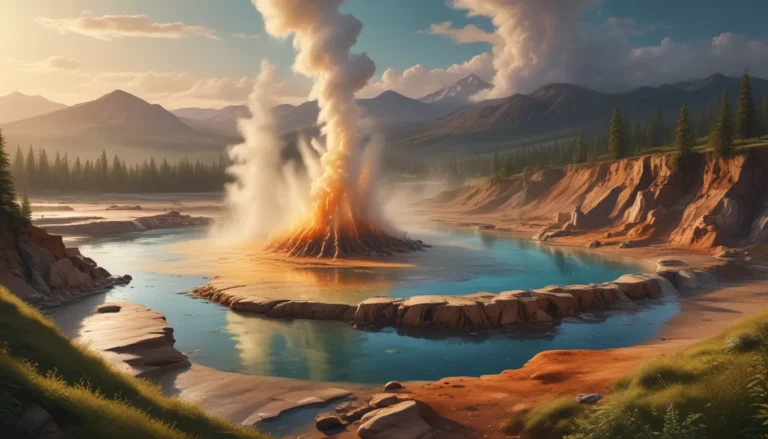A Note About Images: The images used in our articles are for illustration purposes only and may not exactly match the content. They are meant to engage readers, but the text should be relied upon for accurate information.
Marine ecosystems cover over 70% of the Earth’s surface, offering a glimpse into a diverse and thriving world teeming with life. From the majestic Great Barrier Reef to the mysterious depths of the deep sea abyss, these underwater worlds play a crucial role in maintaining our planet’s delicate balance. In this article, we will delve into 12 intriguing facts about marine ecosystems that highlight their unique characteristics and importance. Join us as we uncover the wonders of these captivating environments!
Discovering the Rich Diversity Below the Surface
Marine ecosystems are vibrant and essential for the health of our planet. Let’s embark on a journey to uncover 12 fascinating facts about these enchanting underwater realms where life thrives abundantly.
The Great Barrier Reef: An Oceanic Marvel
Stretching over 2,300 kilometers along the Australian coast, the Great Barrier Reef stands as the largest living structure on Earth. This awe-inspiring marine wonderland is home to a mesmerizing array of marine species, showcasing the beauty and diversity of life beneath the waves.
Whale Sharks: Gentle Giants of the Sea
Diving into the ocean’s depths, we encounter whale sharks, the world’s largest fish species, reaching lengths of up to 40 feet. Despite their immense size, these gentle giants primarily feed on plankton and small fish, symbolizing the grace and magnificence of marine life.
The Enigmatic Deep Sea Abyss
Delving into the mysterious abyss of the deep sea, we enter a realm that remains largely unexplored, constituting over 80% of Earth’s biosphere. Within its dark and unfathomable depths, a myriad of unique and bizarre organisms thrive, adapted to extreme and challenging conditions.
Coral Reefs: Havens of Biodiversity
Known as the rainforests of the ocean, coral reefs are biodiversity hotspots teeming with life. Supporting a quarter of all marine species, these intricate ecosystems play a crucial role in maintaining the health and balance of marine environments worldwide.
The Magnificent Blue Whale
Claiming the title of the largest animal to have ever roamed the Earth, the blue whale astounds with its immense size, reaching lengths of up to 100 feet and weighing a staggering 200 tons. These majestic creatures embody the grandeur and splendor of the marine world.
Mangroves: Nature’s Coastal Guardians
Mangrove forests stand as natural bulwarks against storms and erosion, their intricate root systems providing sanctuary for a multitude of species, from fish to birds and even primates. These coastal habitats play a vital role in preserving the delicate balance of marine ecosystems.
Seahorses: Masters of Camouflage
Seahorses exhibit remarkable mastery in the art of camouflage, seamlessly blending into their surroundings with the ability to change color and grow appendages for enhanced concealment. Their unique adaptations showcase the ingenuity and diversity of marine life.
Safeguarding Marine Ecosystems Through Protected Areas
Marine protected areas (MPAs) serve as designated regions aimed at conserving and safeguarding marine ecosystems and species. These vital areas promote the regeneration of populations and the preservation of biodiversity, ensuring the sustainability of our ocean environments.
The Phenomenal Sardine Run
Along the South African coast, the annual Sardine Run unfolds as a captivating natural spectacle, as millions of sardines migrate in massive shoals, attracting a multitude of predators, including dolphins, sharks, and seabirds. This breathtaking event showcases the interconnectedness and dynamism of marine life.
The Coral Triangle: A Marine Haven
In the western Pacific Ocean lies the Coral Triangle, renowned as the most biodiverse marine region on the planet. Home to 76% of all known coral species and an astonishing array of marine life, this vibrant ecosystem serves as a testament to the richness and diversity of our oceans.
Estuaries: Bridging Fresh and Saltwater Realms
Estuaries emerge as vital transition zones where rivers meet the sea, providing essential nurseries and breeding grounds for numerous marine species. These brackish habitats play a pivotal role in sustaining the life cycles and ecosystems of our oceans.
Embark on a journey of discovery through these 12 captivating facts about marine ecosystems, unveiling the richness and significance of our underwater realms. From the colorful tapestries of coral reefs to the enigmatic depths of the ocean, each facet of marine life offers a source of wonder and fascination.
Embracing the Marvels of Marine Ecosystems
Marine ecosystems captivate us with their diversity and allure, holding a profound impact on our planet’s health and vitality. By deepening our understanding of these intricate environments and promoting sustainable practices, we can safeguard the well-being of our oceans and the myriad species that call them home.
From the remarkable adaptations of marine creatures to the delicate beauty of coral reefs, every aspect of marine ecosystems invites us to explore and appreciate the wonders of the underwater world. Let us engage in raising awareness and advocating for conservation efforts to preserve the splendor and richness of marine life for generations to come.
FAQs: Exploring Marine Ecosystems
-
What defines a marine ecosystem?
A marine ecosystem encompasses the community of plants, animals, and microorganisms that inhabit and interact in the ocean or other saltwater bodies, comprising diverse habitats like coral reefs, mangroves, estuaries, and the open sea. -
Why are marine ecosystems vital?
Marine ecosystems play a crucial role in providing food, oxygen, regulating climate, absorbing carbon dioxide, supporting biodiversity, and contributing to economic activities and tourism. Their health and balance are essential for the well-being of the planet and its inhabitants. -
What threats do marine ecosystems face?
Major threats to marine ecosystems include pollution, overfishing, habitat destruction, climate change, and invasive species, which can disrupt ecosystem dynamics and endanger species diversity. -
How can we protect marine ecosystems?
We can protect marine ecosystems by adopting sustainable fishing practices, reducing plastic pollution, supporting marine protected areas, and advocating for conservation policies. Small actions taken collectively can make a significant impact on preserving the health of our oceans. -
What are some intriguing facts about marine ecosystems?
Fascinating facts about marine ecosystems include the presence of bioluminescent organisms, the underwater expanse of the Mid-Atlantic Ridge (Earth’s longest mountain range), and the migratory patterns of marine species such as whales and sea turtles. Exploring these facts enhances our appreciation for the marvels of the marine world.
In our commitment to delivering reliable and captivating content, we strive to offer you a wealth of diverse insights and information contributed by real users. Each fact is meticulously reviewed by our dedicated editors to ensure accuracy and authenticity, fostering a sense of trust and engagement as you immerse yourself in the fascinating world of marine ecosystems. Join us on this enriching journey of exploration and discovery as we continue to learn and appreciate the wonders of our oceans.
